My favorite thing as a designer is collaborating with clients to answer big, messy questions. The process often involves several moving parts, including institutional knowledge of the organization, internal and external procedures, and services.
Layering onto that are the people using the services, their discrete needs, and their challenges. Imagine your nonprofit organization as a train station with essential dependencies that must happen to run smoothly. Service design is a tool that can support and capture the critical moving parts and pieces to make beneficial decisions to better serve your community's changing needs.
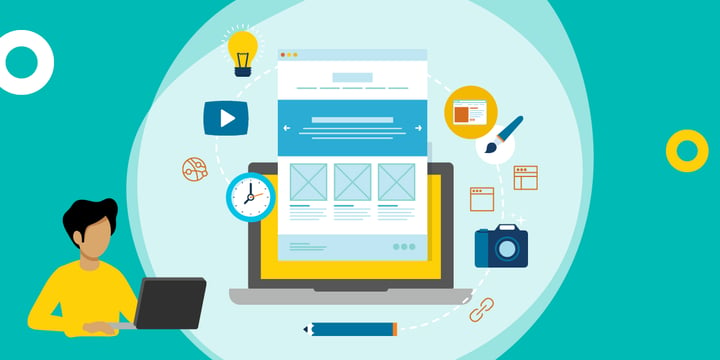
What Is Service Design and Why Does It Matter to Your Nonprofit?
Service design is unlike user experience (UX) design, which tends to identify a specific problem or touchpoint with a beneficiary. Service design is a problem-solving approach that takes a holistic view to "connect the dots" of your organization, services, and clients. You may already be familiar with terms like "human-centered design" and have even implemented user interviews and user testing techniques to understand your clients' needs. These insights will support your service design for implementing solutions at your nonprofit.
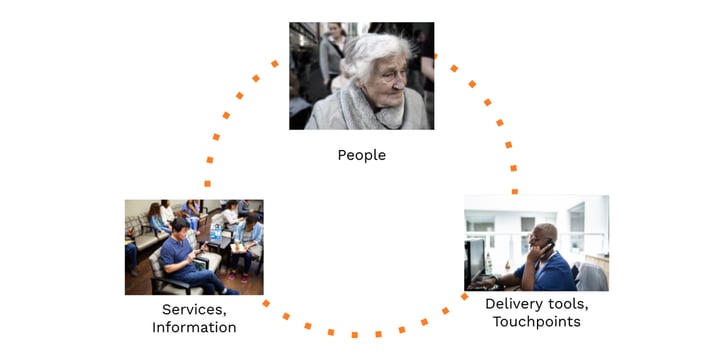
Connecting the Dots
As we're connecting the dots, we start to examine how things relate to one another. What are the dependencies, where are the gaps, where are the opportunities? Service design uses a variety of approaches to streamline and improve the way people interact with your organization. Ultimately, we use our findings to support a consistent, meaningful, and remarkable experience for the people you serve.

Four Key Service Design Principles
Principle 1: People-focused. Service design starts and ends with the people who are the foundation of your organization, including your clients, volunteers, internal team members, and other stakeholders.
Principle 2: Participatory. Service design encourages active communication, sharing your team's insights to co-own the process and solve problems together.
Principle 3: Research-based. Service design includes utilizing your clients' knowledge (e.g., interviews, surveys, feedback) and data or analytics about how they're interacting with your service.
Principle 4: Iterative. Your service design will grow and evolve, depending on where you are as an organization or on extenuating factors.
Two Easy Service Design Tools
The main tools used for service design are a user journey map and a service blueprint. These two complementary methods help us see multiple layers of our services. Combined, they capture iconic experiences over time.
Here is an example of a customer journey map for an online shopping experience. While it is not nonprofit-focused, the same principles can be applied. Each stream is a shopping task's main touchpoints that articulate the central moments, client emotions, and pertinent observations. It maps what clients are doing, thinking, and feeling. Note: a user journey map is not a single customer experience. It's an aggregate of experiences compiled from user research and subject matter experts in your organization.
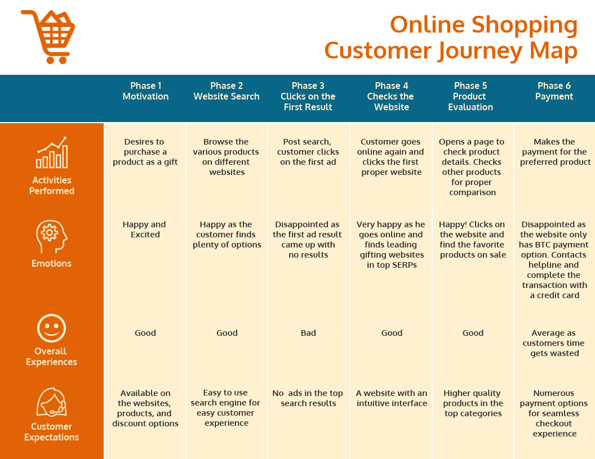
All good user journey maps include the following:
- Key activities performed over time to accomplish a task
- Clients' feelings and behaviors
- Additional resources, such as tangible artifacts or technology
Try it:
- You can create a journey map by interviewing benefactors to capture their insights and then map them against each other to find commonalities, patterns, and trends.
- You can also piece together a customer journey map from data that is already being collected on the customer experience.
- After the initial touchpoints are documented, identify those moments of friction that can be an opportunity for improvement.
- Share the journey map with others on your team to get their feedback and discuss options for improvement.
Adding discrete layers to the client's experience is done in a service blueprint. This captures the organizational needs that support the client experience: team, technology, processes, policies.
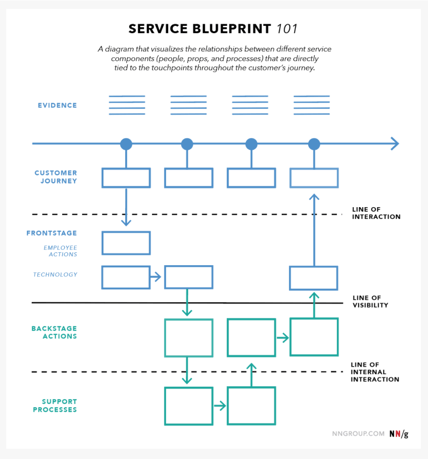
Here is an example of a service blueprint for an online shopping experience.
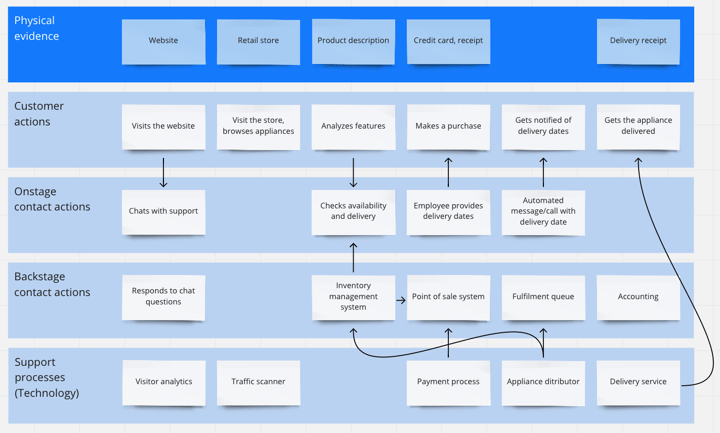
Taking our online shopping example into consideration, we layer additional streams captured in our user journey map, such as processes, tools, staff, and policies needed to support those experiences.
All good service blueprints include the following:
- Physical evidence: tangible touchpoints for client interaction
- Customer actions (moments or steps) already defined in the user journey map
- Onstage contact actions: your organization's moments or steps during the process, customer-facing
- Backstage contact actions: your organization's moments or steps during the process, inward-facing; your team's effort to support the step
- Support processes: technology, what your website needs to process
Try it:
- You can create a service blueprint by adding layers to your user journey map.
- Do you notice any dependencies in the touchpoints, such as the internal staff needed to support the task or the technology required?
- Again, you will identify those moments of friction that can be an opportunity for improvement. Perhaps with a broader view, the chance of improvement shifts from one stream to another?
- Service design is collaborative, and you will want to share your insights with others on your team for feedback and discussion.
Final Takeaways
Through collaborative methods that engage both customers and service delivery teams, Service design helps organizations gain an authentic, end-to-end understanding of their services, enabling holistic and meaningful improvements at your nonprofit.
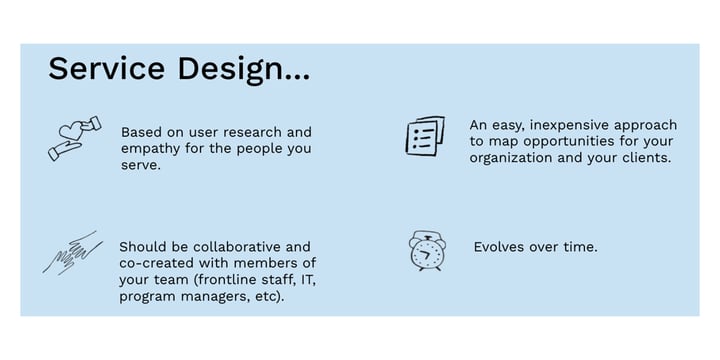
Characteristics of service design:
- A straightforward, inexpensive approach to map opportunities for your organization and your clients
- Based on user research and empathy for the people you serve
- Includes two main tools: user journey map and service blueprint
- Should be collaborative and co-created with your team members (frontline staff, IT, program managers, etc.)
- Evolves over time
About Exygy
Exygy partners with social impact organizations to design and build technology that improves lives. If your nonprofit is looking to rethink or strengthen your service design, reach out to the Exygy team or subscribe to our newsletter.
Additional Resources
- Watch our webinar replay of Service Design for All: Bridging Gaps in Your Nonprofit's Service Delivery.
- Take advantage of TechSoup's Digital Marketing Services.







